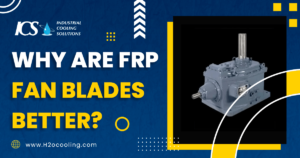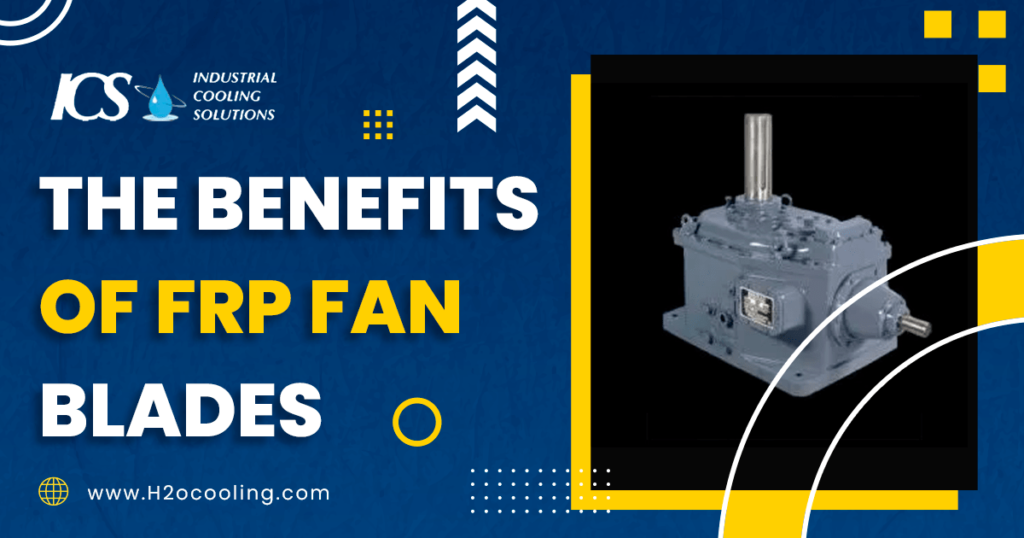The Benefits of FRP fans” in cooling tower design for specific industrial needs, two critical aspects come to the forefront. Firstly, it’s essential to pump adequate water into the system for effective heat mitigation from the industrial process. Secondly, ensuring the right airflow through the tower to cool the water along the fill material is vital. FRP (Fiber Reinforced Plastic) fans and centrifugal fans are ideal for this application. FRP fans offer precise shape control, unlike traditional aluminum blades, which have structural limitations.
Why Are FRP Fan Blades Superior to Centrifugal Fan Blades?
In the world of industrial cooling towers, efficiency is paramount. While cooling towers might not be top of mind for the average person, these crucial systems, which incorporate metal, concrete, plastic fans, axial fans, and FRP exhaust fans, underpin the industries that produce our essential goods. Here at Industrial Cooling Solutions, Inc., we have been in the business of constructing, maintaining, and repairing cooling towers for decades.

Fiber-reinforced Plastics vs. plastic Fans
FRP, or fiberglass-reinforced plastic (FRP), a material originally developed for military applications, has emerged as a game-changer across diverse industries. Initially intended for the military, this lightweight and highly durable material quickly found its place in various industrial processes. Notably, it excels in withstanding corrosive elements, making it indispensable for scenarios involving chemicals and other corrosive materials.
While industrial cooling towers may not be associated with extreme chemical exposure, there’s still a need for materials capable of withstanding harsh conditions. In this context, the component that has reaped the most benefits from FRP materials is the fan. Specifically, FRP fan blades have taken the spotlight in modern cooling towers, overshadowing their traditional aluminum counterparts. Here’s a closer look at the reasons behind this industry shift:
- Shape Optimization: When it comes to designing cooling towers tailored to specific industrial requirements, two key aspects come to the fore. Firstly, ensuring a sufficient flow of water is critical for effective heat dissipation from industrial processes. Secondly, maintaining optimal airflow through the tower to cool the water along the fill material is vital. FRP fans blades are an excellent choice, offering precise shape control unlike traditional aluminum blades, which have structural limitations
- Resistance to Corrosion: While cooling towers may not be abundant with caustic chemicals, they are not immune to corrosive elements. Over time, aluminum fan blades succumb to water’s effects, necessitating replacements to prevent potential damage to the tower’s internal components. In contrast, FRP fan blades exhibit remarkable resistance to corrosive elements, ensuring longevity and superior durability, making them the optimal choice for fan blades.
- Weight: Cooling tower fans operate at high RPMs, necessitating fan blades that can withstand rotational forces without overburdening the motor. Traditionally, aluminum has been the preferred choice due to its exceptional strength-to-weight ratio. These FRP fan blades, including plastic fans, axial fans, and centrifugal fans, contribute to fan assembly efficiency while reducing stress on the motor.
At Industrial Cooling Solutions, Inc., we are dedicated to providing the best cooling tower services possible, and we believe, quite strongly, that FRP fan blades are the best option for nearly every application that our customers may have.
Contact us to learn more about the types of FRP fan blades that we offer.

